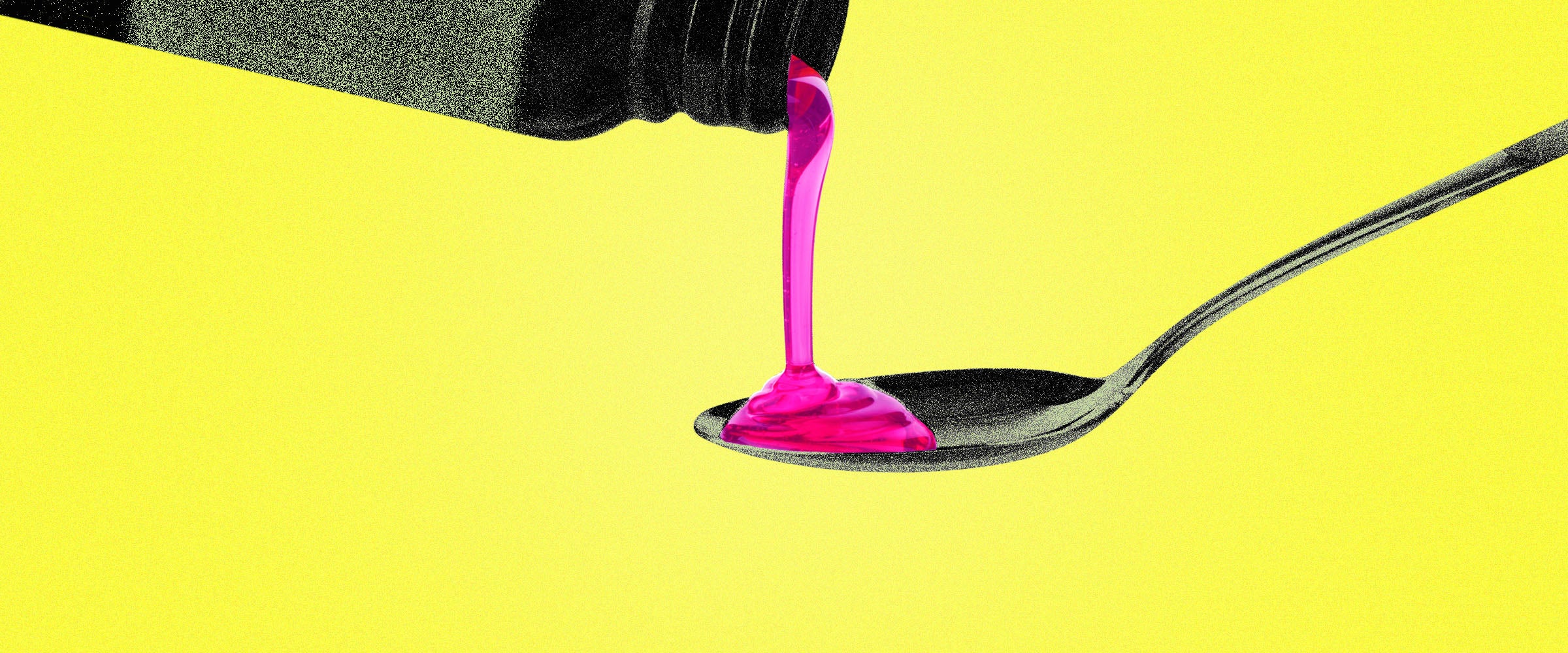Most of us put all manner of crap in and on our bodies to make them work a little better. Since most of us have no idea exactly how aspirin cures hangovers or how contacts stop us from driving into that truck stop, we’re examining the working parts in the many things we use to get through the day — many of them perfectly legal.
This edition: Cough Syrup.
How It Works
Over-the-counter cough syrups typically contain a combination of expectorants (which reduce the accumulation of mucus in the lungs) and antitussives (which are better known as cough suppressants). “Guaifenesin is the only FDA-approved expectorant,” American Pharmacists Association spokesperson Heather Free explains, adding that it’s meant to relieve so-called “productive coughs” (i.e., the ones where you splutter up grody brown lung-snot).
“This class of medication works to help thin the mucus, allowing our bodies to cough it up easier — the goal is to get rid of the mucus or phlegm.” Free further explains that guaifenesin works by attracting water, pulling it into the lungs, where it can dilute the mucus and make it easier to cough up.
But while guaifenesin is the only FDA-approved expectorant, Free mentions that there are several common FDA-approved over-the-counter antitussives: Codeine, dextromethorphan and diphenhydramine. Here’s how they work:
- Codeine: To my surprise, Free says that codeine (at antitussive dosages) is available without a prescription in 30 states. “Codeine acts centrally on the brain to increase the cough threshold,” Free explains. More specifically, it reduces the nerve signals sent from the coughing center, located in the medulla oblongata area of the brain, to the muscles that actually make us cough. “When used at antitussive doses, codeine has low toxicity and little risk of addiction,” says Free. “However, caution should be taken while storing this medication at home and mixing this medication with other over-the-counter and prescription medications.”
- Dextromethorphan: “Many available over-the-counter cough suppressants contain dextromethorphan, which is indicated for the suppression of nonproductive cough caused by chemical or mechanical respiratory tract irritation,” Free says. “Basically, this medication temporarily decreases activity in the part of the brain that causes coughing, allowing your body to try to heal.”
- Diphenhydramine: “Diphenhydramine is classified as a nonselective first-generation antihistamine [a class of medications used to treat allergy symptoms],” Free explains. “While approved by the FDA as an antitussive, it’s not considered a first-line antitussive. It acts centrally in the brain to increase cough threshold.”
Put simply, all of these antitussives basically work by blocking receptors in the brain that encourage coughing. These receptors would normally transmit signals to the cough center of the brain, triggering the contraction of the muscles that close the vocal cords and those that we use to breath out, resulting in the sudden expulsion of air that we call a cough. Since antitussives prevent those receptors from ever transmitting the initial signals that eventually lead to that cough, when they’re combined with guaifenesin — as is the case in many cough syrups — both the cough and the mucus buildup causing that cough will be suppressed.
All that said, Free has several warnings regarding the use of cough syrup. “When selecting your cough suppressant, be aware that there are many combination products on the market,” she says. “Only take products per symptom: If you only have a cough, only treat the cough. Taking more medications than needed doesn’t mean that you’ll be treated quicker. In fact, it could lead to unwanted side effects, making you feel as if you’re getting sicker.”
This warning almost certainly has to do with the fact that people really love getting high on cough syrup. The high-inducing ingredient in most over-the-counter cough syrups is the above-mentioned dextromethorphan, which produces a metabolite called dextrorphan when consumed in large doses. Dextrorphan happens to be an NMDA receptor antagonist, like the heavy-hitting hallucinogenic drugs ketamine and PCP, which means it can shut down certain neural pathways that leave the user feeling dissociated and, well, high as balls.
We also can’t mention cough syrup without mentioning Purple Drank, the infamous recreational mixture of prescription-strength cough medications and soda (preferably Sprite). Instead of dextromethorphan, codeine is usually the high-inducing ingredient in Purple Drank, and it basically works by interacting with opiate receptors in the brain in the same way that the drugs like morphine and heroin do to provide a warm, fuzzy feeling.
Of course, consuming enough dextromethorphan or codeine to get you high is incredibly dangerous and can result in both liver failure and respiratory depression, which basically means you stop breathing altogether.
So there you have it, kids: Cough syrup is great and all, but maybe just use it to hock out that chest loogie.

